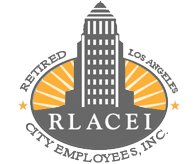
LACERS BOARD UPDATE
By Michael R. Wilkinson
LACERS/Legal Representative
Whenever I write on the subject of actuarial calculations, I see eyes glazing over before I begin, so bear with me. Yes, changing LACERS’ actuarial assumptions may not sound important or thrilling, but maybe if I put it another way it will catch your attention: “LACERS makes changes to ensure your pension checks keep coming.” Ah, now I have your attention.
The overall simple math of providing your pension is this: Combine the money in from your contributions as an active employee, plus the City’s contributions, plus investment earnings pay for the pension and health benefits we receive and the administrative and investment costs.
The job of the LACERS Board and the actuary is to ensure that we realistically plan for the money coming in and going out so that there will be enough to pay for our lifetime retirement pension and benefits.
The actuary helps the Board to come up with realistic assumptions of what it will cost to provide the pension, making estimates on how long retirees will live, what the cost of living will be, how much health insurance will cost and what raises City employees will get during their working career. Also, the Board must make a difficult decision in predicting the income our investments will make.
Estimating the investment return is critical since it is the single most important source of the money to provide our pensions. If we choose an investment return that is too high, we risk not putting away enough money to support the pension, and the City must make up the deficit in larger contribution payments down the road.
I have always voted and argued for following our actuary’s recommendation so that we can be sure we are putting enough money away to invest for our pensions. In 2017 and 2018, the actuary recommended that we lower our investment assumption from 7.25 percent to 7 percent. I agreed and voted both times for the 7 percent assumption, but the Board majority chose to keep it at 7.25 percent.
A lower percentage means that we are anticipating lower investment returns over the next 30 years, so the City must put in more money now. While a higher (and in my view unreasonable) investment assumption may seem to save the City money now, the overall costs are much larger when the bills come due later.
This time the Board adopted all the of the actuary’s recommendations, making several changes to the assumptions, including the long overdue reduction in the assumed investment rate of return to 7 percent, and changing the inflation assumption to 2.75 percent from 3 percent. The vote to accept the new assumptions was unanimous. Note the inflation assumption change does not change the rules providing the COLA for Tier 1 and Tier 2 members. The Board also revised its assumptions for active member raises.
I want to thank RLACEI President Ruth Perry and LACERS’ former General Manager Tom Moutes for their thoughtful written public comments in support of the change in the investment assumption rate. Similarly, thanks to other LACERS and City family members (listed in order of appearance in the LACERS documents) for their supportive comments: Kelly Kadomatsu, Li Hsi, Mark Blunk, Steven Montagna, Susan Ozawa, Trina Unzicker and Mary Campos.












